June 17, 2025 | 18:28 GMT +7
June 17, 2025 | 18:28 GMT +7
Hotline: 0913.378.918
June 17, 2025 | 18:28 GMT +7
Hotline: 0913.378.918
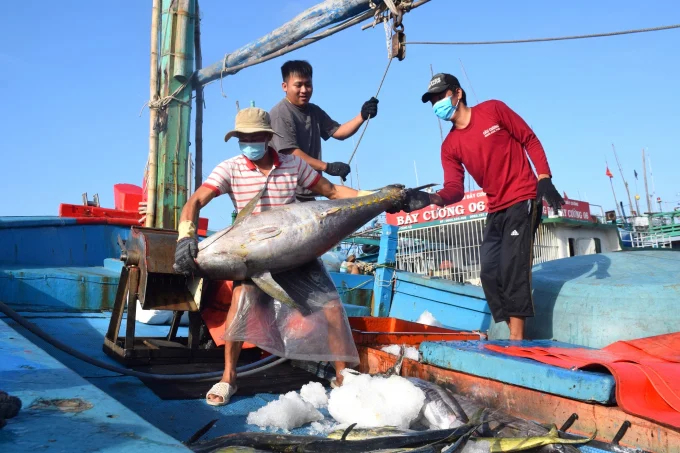
Ocean tuna contains many nutrients for health and is popular with people. Photo: Dinh Thung.
The process of preserving ocean tuna on fishing boats using nanotechnology combines the steps of creating nano nitrogen bubbles in circulating cold seawater, exploiting, processing, and preserving tuna, conducted by Master Pham Van Long (Research Institute for Marine Fisheries) deployed it when put into practical application to help people reduce production costs, save the amount of ice they carry and increase profits on beach trips.
This method goes through the following steps: creating circulating cold seawater, exploiting tuna, pre-processing, and the final step, preserving with nano nitrogen bubbles on board the ship. First, to create leaking cold seawater, fishermen need to mix crushed ice with seawater in the cooling tunnel according to the actual volume ratio of ice-water of 3/2 and put the crushed ice into the tuna preservation tunnel; the amount of stone fills 2/3 of the tunnel. This step can be done at shore when the ship picks up ice. After that, pumping seawater into the tunnel until the rock layer floats 10cm above the tunnel ceiling is enough.
After the crushed ice and seawater are saturated, the salinity of the seawater-ice mixture is about 14‰. It is necessary to add salt to the cellar to maintain salinity at 20 - 25‰. The first salt addition ratio is 8:1,000 (1,000 liters of water = 8 kg of salt). Then, the seawater circulation pump is operated for about 5 minutes to neutralize the water temperature and salinity at the surface and bottom of the storage tunnel.
Master Pham Van Long noted that people should choose the time to operate the nano nitrogen bubble generator system in the evening, when the boat runs the generator, to lighten up the fish concentration. After bringing the tuna onto the deck, fishermen should use a hook on the fish's head or gills to pull the fish onto the deck. Do not hook the hook into the fish's body. When pulling it onto the deck, do not let the fish get scratched or reduce its commercial value.
"When the fish comes on deck, it is necessary to kill the fish immediately. It is necessary to ensure that the total time for handling and preparing the fish does not exceed 5 minutes. After removing the tuna's gills, internal organs, and fins and washing the fish, preserve the product," said Master Long.
This method preserves tuna vertically with the fish head below the fishtail above. The fish is soaked in a cold, circulating seawater tunnel throughout the trip. First, soak the fish in cold seawater containing nano nitrogen bubbles, tie one end of the rope to the fish's tail, and hang the other on a pulley to take the fish down to the storage cellar. Put the fish head down in the hold, the fishtail above, and keep the fish soaked until the ship returns to port.
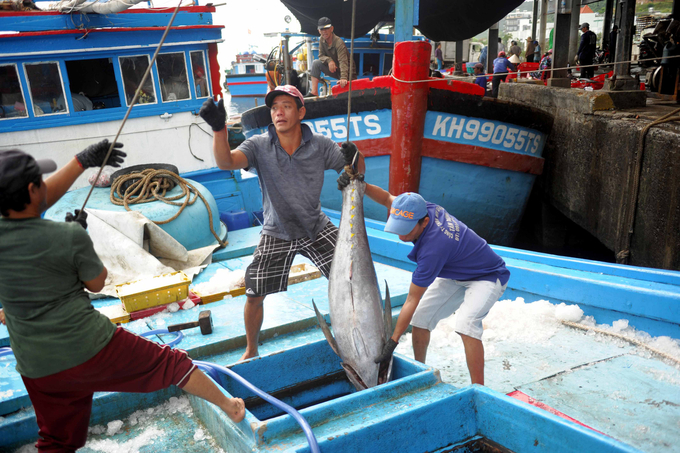
Ocean tuna is preserved in vertical salting style, the fish head below, the fishtail above. Photo: Le Phuong.
Every day, it is necessary to check the amount of stone in the storage tank and maintain a layer of stone floating on the water surface 20-30cm thick throughout the trip. If there is a shortage of ice, it needs to be supplemented promptly. During product preservation, it is necessary to operate a nano nitrogen bubble generator every 4-5 days to remove dissolved oxygen in the storage cellar. Equipment operating time is about 1-2 hours.
After preserving the fish, it is necessary to operate the circulation pump twice a day to neutralize the temperature between the surface and bottom layers in the storage tunnel; the operating time is about 5 minutes/time. When the ship arrives at the dock, unload the products so that the preserved fish are unloaded first to avoid tangling the fish hanging ropes.
According to the Research Institute for Marine Fisheries, creating nano nitrogen bubbles is a high technology, successfully researched and applied for the first time in Vietnam. Initially, the technology was transferred to 30 offshore fishing vessels, and trial production was organized.
The results show that the application of nano nitrogen bubble generation technology has reduced the cost of seagoing production by 5% by saving about 50% of the amount of ice carried on the ship. The profits of ships applying nano nitrogen bubble generation technology are 2.1 times higher than the profits of ships preserving using traditional methods.
Successful research and effective application have helped connect scientists, managers, manufacturers, traders, and distributors. Ocean tuna preserved with nano nitrogen bubble technology has been exported to Japan and other markets. Model ships participating in the value chain have benefited from receiving and transferring new technology and benefiting from selling products at higher prices than the market.
Translated by Tuan Huy
![Turning wind and rain into action: [6] ‘Four on-the-spot’ disaster management software](https://t.ex-cdn.com/nongnghiepmoitruong.vn/608w/files/news/2025/06/14/z6705183772518_8e6a71d5e2d464e10197411eb1d14b51-nongnghiep-192556.jpg)
(VAN) By simply activating the scenario on the disaster management software, the relevant authorities immediately know how many households need to be evacuated, where to evacuate them to, and by what means of transportation…
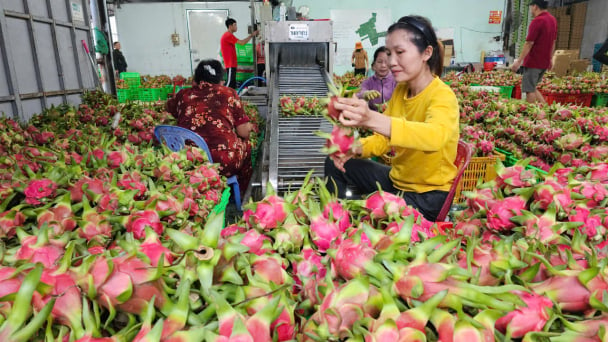
(VAN) According to the Binh Thuan Department of Industry and Trade, in the first five months of 2025, Binh Thuan's dragon fruit export turnover increased by 20.65% compared to the same period last year.
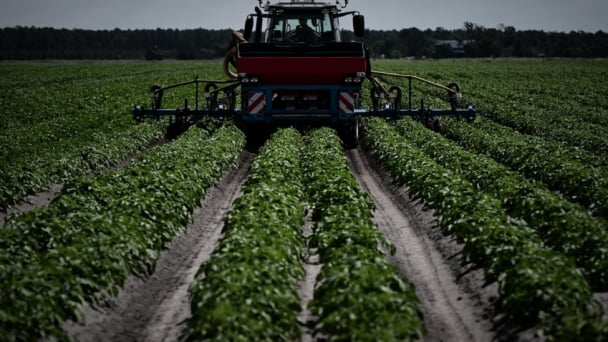
(VAN) EU countries on Thursday gave final approval to new tariffs on fertilizer imports from Russia, a move aimed at cutting off revenue that could support Moscow’s war in Ukraine, despite concerns from European farmers.
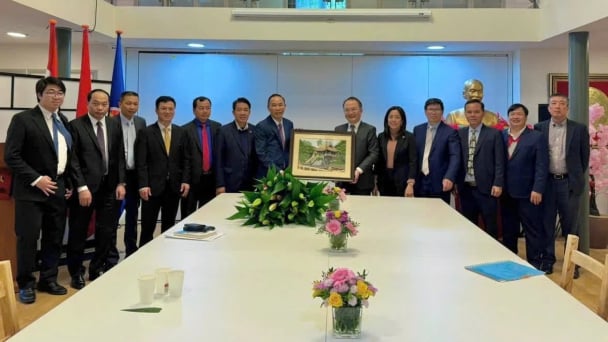
(VAN) The working delegation from the Ministry of Agriculture and Environment conducted an important trip to the Netherlands to strengthen strategic partnerships and sustainable development in the agricultural sector.
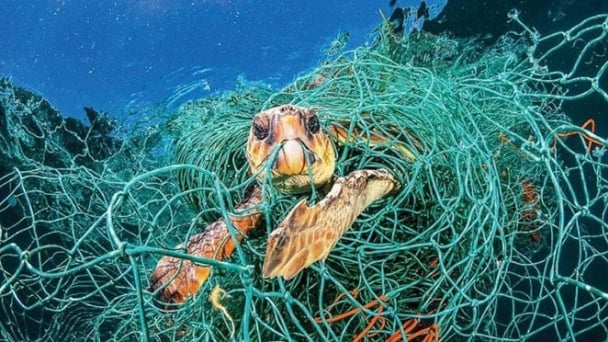
(VAN) The letter ‘A Plea from the Ocean’ not only evokes emotion but also awakens the human conscience to the responsibility of protecting life on Earth.

(VAN) The Department of Agriculture in South Africa has announced the country’s first mass vaccination of poultry to prevent local birds from contracting avian influenza.

(VAN) Establishment of the Mekong Delta Regional Agricultural Linkage Center, aiming for a closed value chain, deep processing, trading platforms, and international market connectivity.